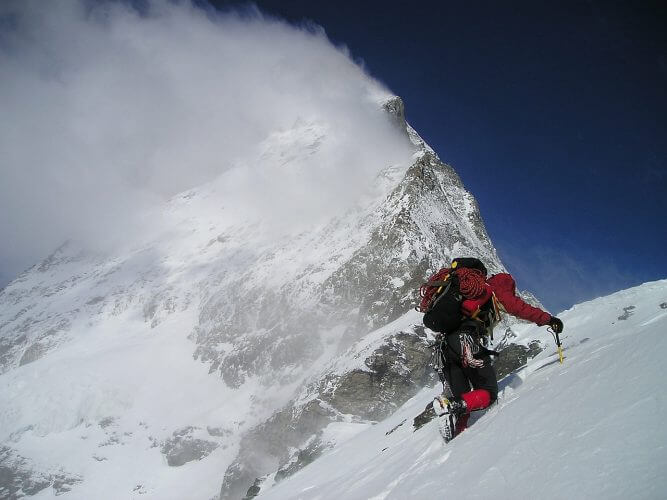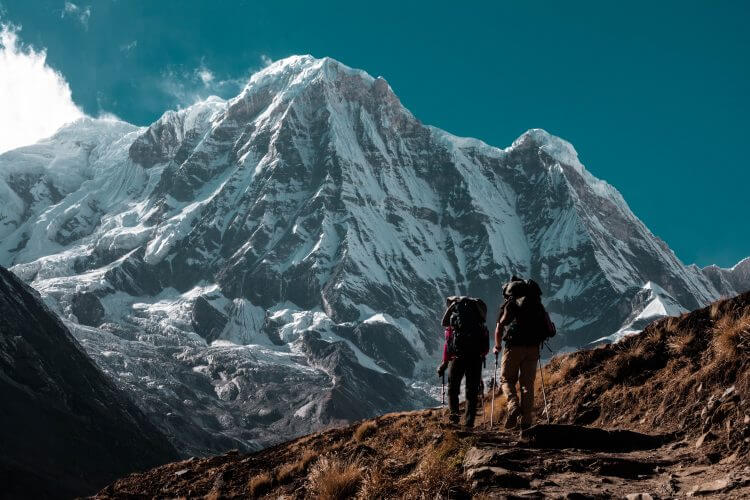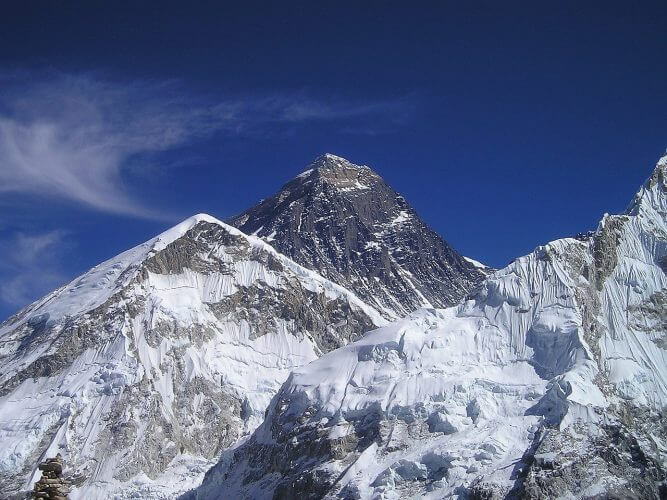Trekking Safety: Understanding the Human Factor
It does not matter if the trails are well trodden with packed down dirt and thousand of footprints or fresh snow covering the mountainside; the most dangerous factor of being outdoors is what has commonly become referred to as “the human factor.” While this term originally came about during research into avalanche accidents and deaths, it really can pertain to any backcountry activity. “The human factor” is simply a mixture of our desires, eager ambitions, and our consciousness (or lack thereof) of the surrounding environment. It deals with the fact that most of us do not look at the terrain around us before making decisions on where we are going and how we are getting there, which inevitably leads to dangerous situations that could have easily been avoided. At its base, “the human factor” is the emotional drive overruling out intellect.
Personal and Group Mentalities
The human factor includes all of our decision-making capabilities, from when, where, and how we trek. We will get into the nitty-gritty details of trekking injuries and conditions later, but it is important to start off at the most important place: decision making. Before you step onto any trail you must evaluate yourself and any teammates that you will be traveling with. Be honest with yourself. Are you ready for this trip? Are you fit enough? Are you well rested enough? Do you have the proper skills to keep yourself safe and achieve your goal without undue harm? Do your teammates also have the proper training and preparation?

When traveling alone it is easy to shoulder the responsibility; after all, who else would? The problem comes when we start traveling in groups. Either intentionally or unintentionally all groups end up with a leader or selected few that are seen as more knowledgeable than the others. We therefore commonly rely on these leaders, whom we assume are more experienced, to make the “right” or “safe” call. But the real problems begin when other members in the group feel unable to question their judgment or everyone assumes someone else is the in charge of decision-making and does not bother to speak up. Inevitably, there is a feeling that decisions should be made by the person with the most skills and understanding of an area or conditions, but being unable to discuss why these decisions are being made or offer alternate options can have devastating effects. It is all too easy to miss a small crown or wind slab, while everyone else in the group assumes that the leader saw it.
Snow Conditions and Avalanches
These notions and statistics become most clear when we start looking at snow travel. Due to the unpredictability of winter conditions, rapidly changing weather, and the human brain there are lots of compounding factors that lead to danger.
According to the Colorado Avalanche Information Center, over the last 10 years and average of 27 people die in avalanches within the USA per year. Snowmobilers are the most common cause of human triggered avalanches, commonly due to them riding too high up the slope. Therefore, it is no surprise that snowmobilers and backcountry tourers are the most likely people to be caught in an avalanche.

However, most injuries and deaths that take place in the backcountry are easily preventable if only we took a little more time to look around and speak up. Ian McCammon, of the National Outdoor Leadership School in Lander, USA, developed F.A.C.E.T.S. as a checklist to help skiers avoid the six most common avalanche traps that lead to accidents.
Familiarity
Sometimes, being too comfortable in a place can leave you vulnerable. For example, if this is your 5th time down a run this season you may be less likely to notice the most recent avalanche signs, including that night wind slab over your head.
Acceptance (aka bragging rights)
Skiing is cool, and we all want to be cool. Right? Please grow up! Yes, you might be out having the time of your life with friends or have spent the past five years training for this moment, but none of that matters if you will not make it out alive to tell the story. Remember that you fell in love with skiing because of the way it made you feel and not because of how badass it made you look.
Commitment (aka: tunnel vision)
We all understand that training, spending all day skinning to, and finally reaching a destination will make you do nearly anything possible to ski down that slope. However, it is always important to remember to open your eyes and expand your vision past a single goal. Whenever heading into the backcountry look at the larger picture, check safety, and then decide to proceed. The hardest part is always saying “not today” and turning around.
Expert Halo
This one brings us back to the “who’s in charge” and de-facto leaders. Not speaking up when you notice a warning sign, not questioning thought processes, and staying silent can all add to the expert halo.
Tracks
Fresh powder to skiers is a bone to a dog. There is just nothing better! However, being the first one down a slope should not be at the expense of ignoring the environment around you. And if you happen to be following tracks, pay attention! It is not always the first one down a mountain that will trigger the avalanche but can happen anytime.
Social Pressure
Skiing is a high intensity, risky hobby that draws adrenaline junkies together. This does not mean that you always have to say “yes.” Stick to things that you are comfortable with and know your personal limits, and please do not be the idiot that craves to peer pressure just to gain acceptance or get bragging rights. Your life is more important than a single run!
Alpine Conditions
So, you want to hike up? Up to the sky, past the tree line, and into the clouds? Great! Now, do it slowly! The standard recommendation, as soon as you are above 2,500 meters (8,000 ft), is to not increase your altitude more than 500 meters per a day (based on where you are sleeping, and not passes or mountains summited during the day). This is due to the drastic effects that increased altitude has on the human body. Not paying attention to these signs and symptoms is one of the easiest ways to get yourself severely injured or possibly even die. Therefore, you might not be skiing, but let’s take a look at that letter “C” from FACET. Commitment: should be to your own health above any goal.

At this point, I am going to add “responsibility” into the discussion. “The human factor” tends to make us want to keep striving and pushing boundaries. That is why we are both responsible for our own health and looking out for our teammates. If you have a severe headache that does not dissipate with water and hydration make the call to descend to a lower elevation. It is likely that you are suffering from acute mountain sickness (AMS). Likewise, if you notice yourself or a team member appearing disoriented, having a sense of euphoria, double vision, or nausea – also descend. These are all signs and symptoms of altitude sickness.
Additionally, understand that both HAPE and HACE are severe stages of altitude sickness and can result in death within hours. HAPE is where a person’s lungs begin to fill with fluid, and causes breathlessness at rest. No, it is never normal to be breathlessness while resting! It can also induce a fever. HACE, on the other hand, is when fluid accumulates within the brain’s extracellular space and can cause confusion, clumsiness, and excessive emotions. If any of these signs are showing, descending to a lower altitude must be done immediately and reach out for medical help as soon as possible.
Trekking and Injuries
One of the hardest things to do is admit when you are tired, and yet this is the simplest way to avoid injury and situations that quickly turn from fun to disastrous. It can be overheating and dehydration, simply the amount of miles, or the effects of altitude that cause you to just “not feel your best.” However, the easiest way to wreck a trip is to try and push through until you break. Take rests as needed and always set realistic expectations for yourself. This way you can avoid that broken arm that was the result of just “one more mile.” And yes, that really did happen to my friend. Believe me, it is no fun trying to sleep in a tent all night with a broken humorous followed by twenty-two-mile hike back to the car the next day.
Also, as a side note, do not overlook something as simple as a blister. From the comfort of your couch you can laugh at me, but as a medical professional (even though I do not have the exact stats to back me up), I would feel confident in claiming blisters as one of the top three reason people’s treks do not go as planned. From risk of infection to trail cutting to try and save time and miles, blisters are the simplest, most overlooked, and prone to cause dangerous situations that can happen to you. Therefore, always carry your first aid kit, treat them at the first sign, and bring plenty of pairs of socks!
Make Changes In Real Life
During my first trip to the Everest Region, back in 2013, a freak snowstorm hit. It was the hardest snowstorm at the time to hit that late in the season since the infamous 1996 storm that inspired “Into Thin Air” and saw the chilling death of eight mountaineers atop Everest. The weather was atrocious, but we were determined to press onwards. However, the route we wanted included a pass, which would be impossible post-storm. Therefore, while everyone else started heading down the mountain, we rerouted south before re-ascending north at a trail that wrapped around the mountains, instead of crossing over – that way eliminating at least the riskiest point of danger.
Honestly, when we came up with this plan to reroute we were not sure if it would be successful. The fact was that there was no reliable weather report and we had no true idea of just how bad the conditions were. At our current elevation we were already facing a few feet of snow, and no matter what path we took, we were looking at continuous elevation gain. That is why when we set out we made it clear that communication was our number one priority. If anyone had any concerns at any time we were to stop and discuss all options before making a group decision. We were actively trying to lessen the “herd mentality” or group approach, and make sure everyone’s voice was clearly heard.

Looking back I can see how we noticed the risks, came up with a plan to minimise them and then continued on a new route. As a team, we decided to skip the pass, knowing it was a risky move, and thus didn’t suffer from tunnel vision. And all the while, tried to maintain awareness and communication. I will admit that I did suffer from a slight feeling of loss of “commitment” and for a few minutes desired to just “keep pushing,” but was thankfully quickly talked down by my fellow teammates.
Anyways, happy news: our rerouting worked, we made it safely to our destination (Sadly, with one less pass in our books.), saw other wonderful viewpoints, and later found out that the pass was so icy that even this late in the season without the storm it would still have required gear we did not possess on us and a skill set some group members would have been short of.
The Moral of the Story is not that you cannot ski a slope, hike a trail, and press on when everything feels against you. The moral is that you need to stop and consider what is worth pressing on for, what are the real risks surrounding you are, and then make your decision. Do not let your rosy glasses fog up your vision, but rather make decisions with your eyes wide open, your mind clear and focused, and after assessing all aspects of a problem. You are human, but you do not have to fall susceptible to “the human factor” – just remember to use your brain. All 100 billion cells and 100 trillion neuronal connections of it!